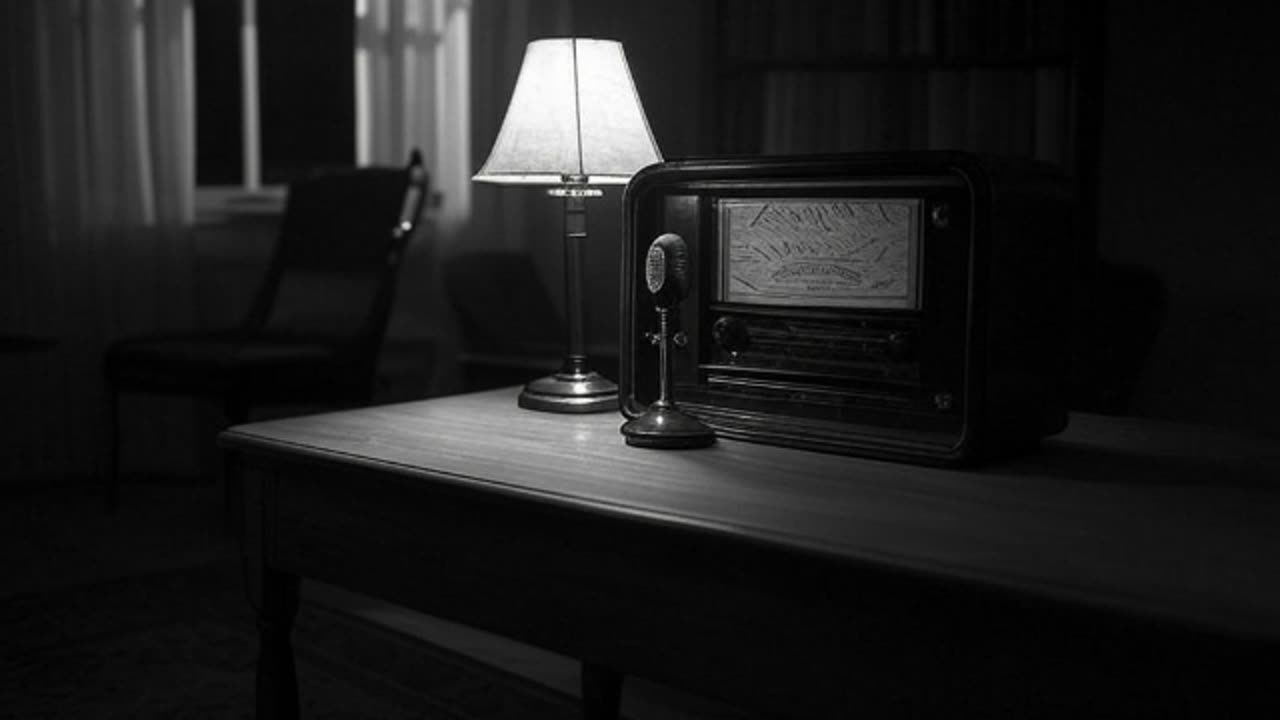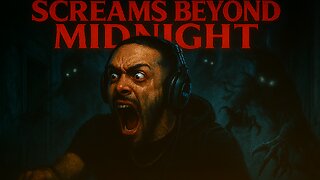Premium Only Content

Lights Out - Until Dead May 26, 1937
Episode Summary: Lights Out - "Until Dead" (May 26, 1937)
"Until Dead" delivers Lights Out’s signature macabre horror, likely centering on a vengeful ghost or cursed individual bound to a grim fate. The story may involve a character haunted by a past sin, with supernatural forces ensuring they cannot escape justice until death—or beyond. Expect eerie sound effects like creaking doors, ghostly wails, and a tense narrative building to a shocking twist, typical of Cooper’s psychological horror style. The protagonist might confront their doom in a chilling, isolated setting, with the episode emphasizing dread and moral retribution. (No recording survives, so the summary is inferred from the title and Lights Out’s thematic patterns.)
National News in the USA: Week of May 26, 1937
Hindenburg Aftermath: The Hindenburg airship disaster (May 6, 1937) remained a major story, with investigations into the cause of the explosion dominating headlines. The loss of 36 lives shook public confidence in airship travel.
Actors and Roles
Specific casting details for Lights Out episode "Until Dead" (May 26, 1937) are not well-documented, as was typical for radio shows of the era, with credits often unrecorded. Lights Out, created by Wyllis Cooper and aired on NBC, featured a rotating ensemble of Chicago-based radio actors. Likely performers include:
Boris Karloff or Lou Merrill as the lead male character (possibly the ghostly figure or a victim). Both were frequent voices in horror radio, though Karloff’s involvement in 1937 episodes is not always confirmed.
Supporting roles (e.g., terrified characters, supernatural entities, or narrators) were likely filled by stock actors like Mercedes McCambridge (early in her career) or Ted Maxwell, but exact roles are unconfirmed due to missing records.
Labor Unrest: The Steel Workers Organizing Committee, backed by the CIO, was escalating strikes against major steel companies like Republic Steel. The Memorial Day Massacre (May 30, 1937) loomed, with tensions reported in Chicago and other industrial hubs.
Economic Recovery: The U.S. was emerging from the Great Depression, but concerns about a potential economic slowdown (later called the Roosevelt Recession) were surfacing. News covered New Deal programs and debates over federal spending.
International Concerns: Nazi Germany’s growing aggression, including its role in the Spanish Civil War, was reported. The bombing of Guernica (April 26, 1937) heightened fears of European conflict.
-
 LIVE
LIVE
Lofi Girl
2 years agoSynthwave Radio 🌌 - beats to chill/game to
304 watching -
 54:47
54:47
Side Scrollers Podcast
1 day agoSide Scroller Presents KING OF THE KART | MASSIVE MARIO KART TOURNAMENT
119K7 -
 2:39:02
2:39:02
The Pascal Show
16 hours ago $1.20 earned'HE'S THE DEVIL!' Former Mother In Law Breaks Silence On Jake Haro & Emmanuel Haro Case
9.25K1 -
 4:47:50
4:47:50
The Why Files
2 days agoCOMPILATION: UFOs and Aliens Vol.2 | They are NOT our friends
50.6K42 -
 5:30:10
5:30:10
SpartakusLIVE
11 hours ago#1 Verdansk Sniper gets HACCUSATIONS because of INSANE Headshots
54.8K4 -
 46:18
46:18
SB Mowing
2 days agoShe was LOSING HOPE but this SURPRISE CHANGED EVERYTHING
41.2K43 -
 10:00:10
10:00:10
ItsLancOfficial
11 hours agoWE LIVE 🔴WE LIVE 🔴 SUNDAY SUNDAYS!!!!!!! TARKOV
34.9K1 -
 4:09:32
4:09:32
EricJohnPizzaArtist
6 days agoAwesome Sauce PIZZA ART LIVE Ep. #59: Are You Ready for some FOOTBALL with GameOn!
40.7K7 -
 1:21:43
1:21:43
Jake Shields' Fight Back Podcast
16 hours agoJake Shields and Paul Miller!
73.7K127 -
 1:20:41
1:20:41
TRAGIKxGHOST
8 hours agoTrying to get SCARED tonight! | Are You SCARED!? | Screams Beyond Midnight | Grab a Snack
27K5